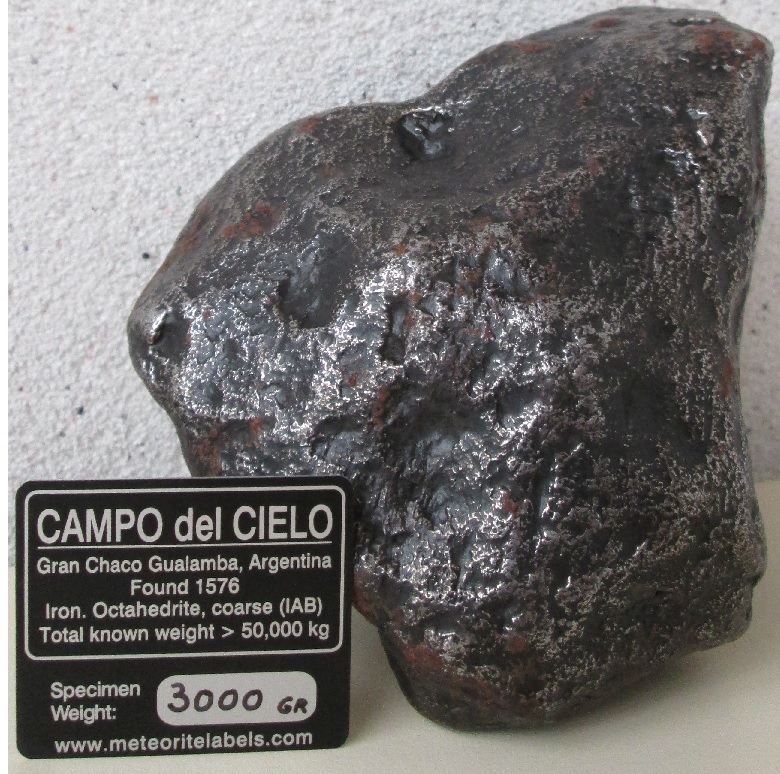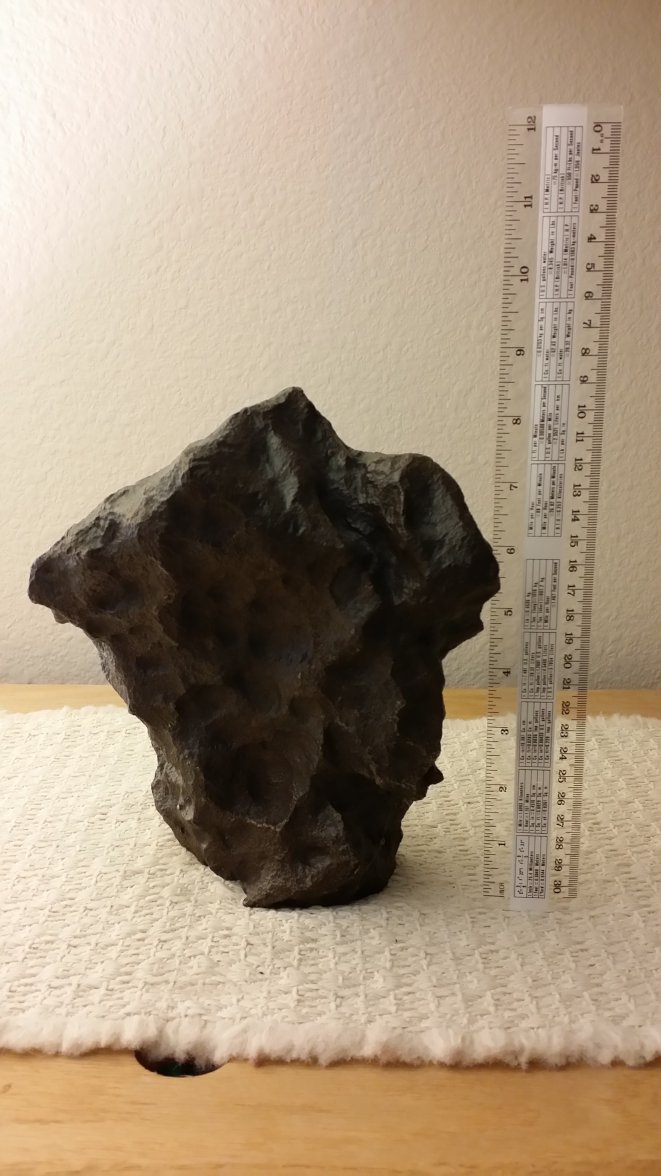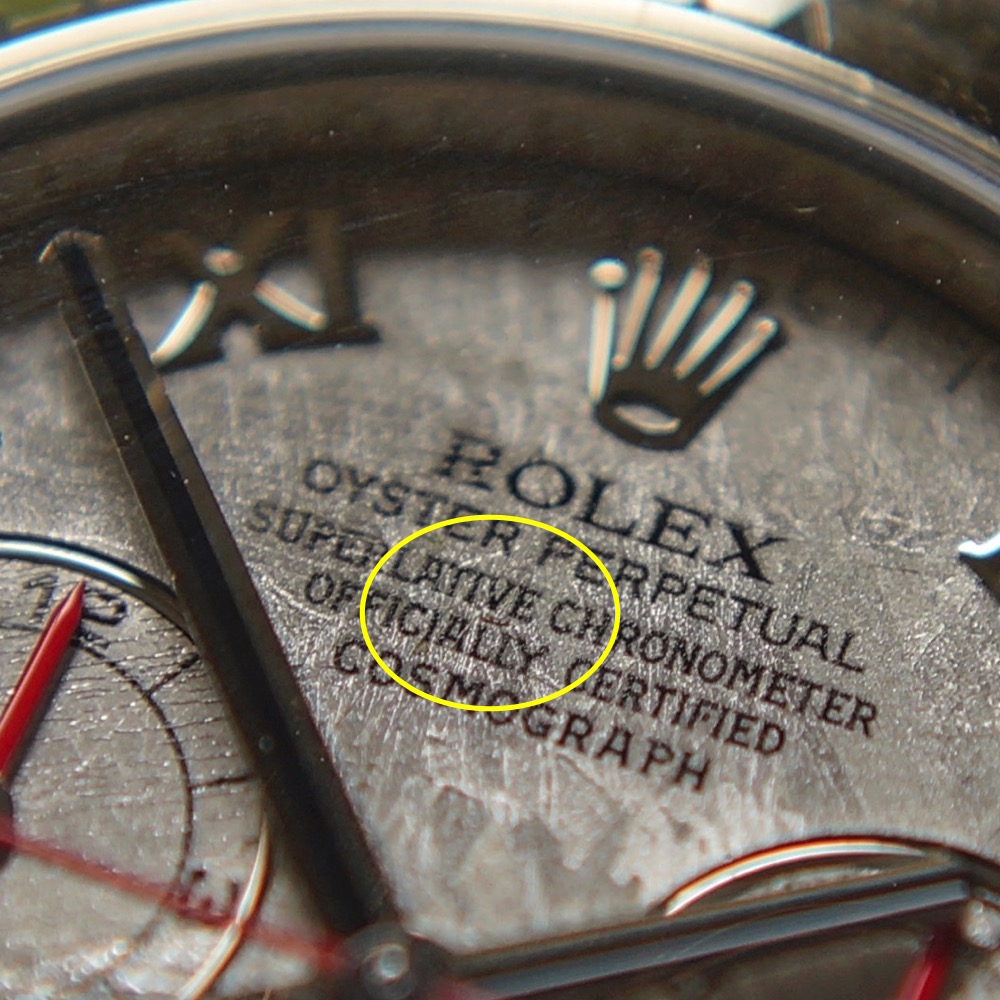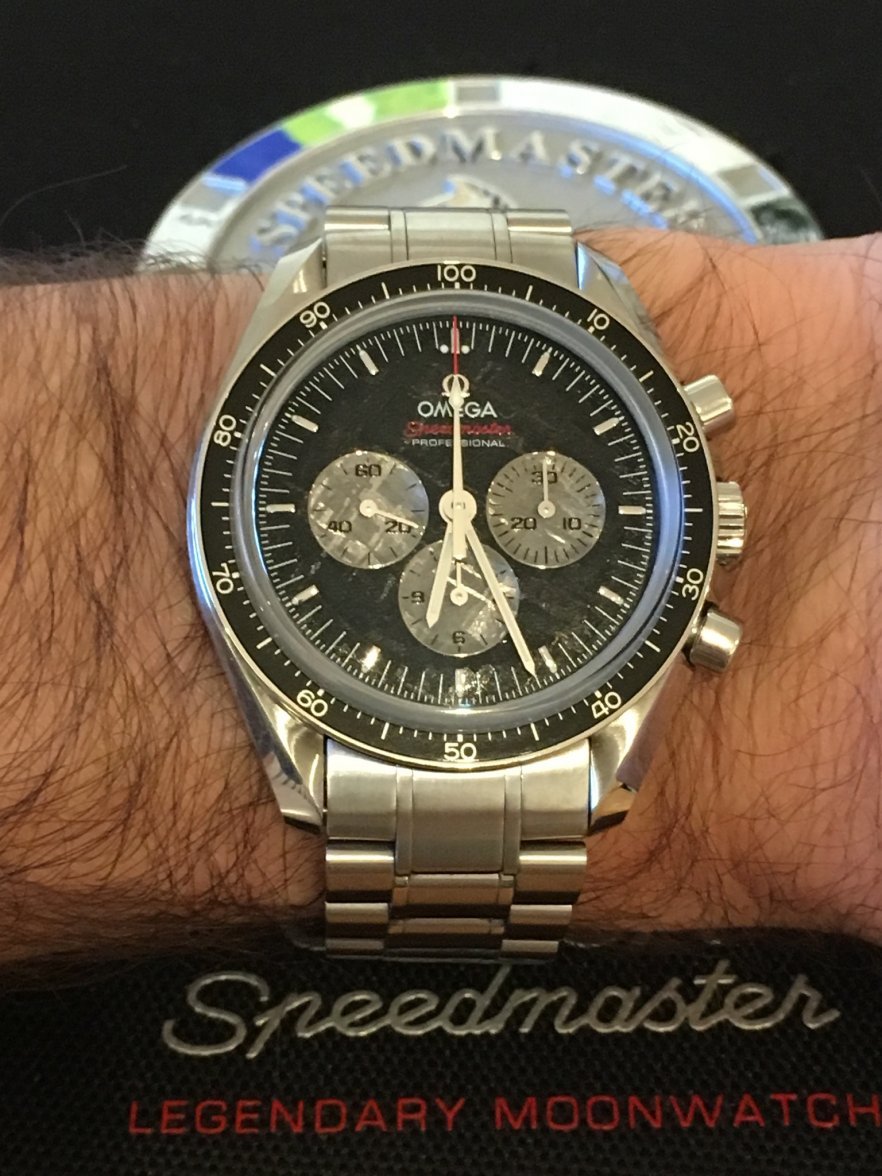Does a meteorite dial patina?
Wryfox
·Stainless steel contains at least 10% chromium, usually more, which gives it corrosion resistance. Gibeon doesn't have chromium.
But it does have 8% nickel, which would make a normal alloy corrosion resistant, but a meteorite isn't a true alloy, more like a mix, so there is still alot of bare iron exposed unless it was coated. And even so, the coating may not be a perfect barrier either.
I would expect some oxidation over time, a long time.
Or you could fill your watch with an inert gas......

Foo2rama
··Nowhere near as grumpy as he used to be...But it does have 8% nickel, which would make a normal alloy corrosion resistant, but a meteorite isn't a true alloy, more like a mix, so there is still alot of bare iron exposed unless it was coated. And even so, the coating may not be a perfect barrier either.
I would expect some oxidation over time, a long time.
Or you could fill your watch with an inert gas......
queriver
·Here's the summary:
- It may or may not patina 😕
- If it does, it might take 200,000 years
None of us will be around then so enjoy the watch for what it is today 🥰
- It may or may not patina 😕
- If it does, it might take 200,000 years
None of us will be around then so enjoy the watch for what it is today 🥰
kkt
·Think in 200,000 years your watchmaker will still be able to get Omega parts?
Vausa412
·This got me wondering... Has the Seamaster ever incorporated an exotic/rare material from the ocean into its parts?
I suppose something like corals would be quite rare and exotic in a few years.
I suppose something like corals would be quite rare and exotic in a few years.
Foo2rama
··Nowhere near as grumpy as he used to be...This got me wondering... Has the Seamaster ever incorporated an exotic/rare material from the ocean into its parts?
I suppose something like corals would be quite rare and exotic in a few years.
There are also a lot of modern ladies Connie’s with MOP dials and some Speedy dates as well.
Vausa412
·There are some mother of pearl aka MOP dials out there in the Seamaster line. About a decade old or so. I think most are oversized.
There are also a lot of modern ladies Connie’s with MOP dials and some Speedy dates as well.
Oh yes, pearls would be a good candidate! These MOP dials look all right but they don't really float my boat. I'll hold out for some fossilized prehistoric fish bones or something.
Wryfox
·queriver
·Just take a look at the rust "patina" on this 3 kilograms Iron meteorite... untreated these space rocks rust while You're looking at them 😁
.
If this earth steel were left untouched for ~450 years there wouldn't be much left of it. It needs a team of full time painters to keep corrosion under control...
Foo2rama
··Nowhere near as grumpy as he used to be...Depends on composition for meteorites and rust.
threeputtbogey
·It's mainly iron, but I believe the treatment process prevents oxidization.
Slowpoker
·They can rust. I've seen a thread on the Rolex forum pertaining to a persons meteorite dial rusting slightly.
https://www.rolexforums.com/showthread.php?t=456088
Not really very rusty though, wouldn't have noticed if it wasn't circled. Plus this specific timepiece was 9 years old in the safe.
You'd expect it since it's mainly iron but I think Omega do treat the surface with a coating to stop any serious issues. Normally Gibeon meteorites are rust resistant.
https://www.rolexforums.com/showthread.php?t=456088
Not really very rusty though, wouldn't have noticed if it wasn't circled. Plus this specific timepiece was 9 years old in the safe.
You'd expect it since it's mainly iron but I think Omega do treat the surface with a coating to stop any serious issues. Normally Gibeon meteorites are rust resistant.
Edited:
queriver
·They can rust. I've seen a a hread on the Rolex forum pertaining to a persons meteorite dial rusting slightly.
https://www.rolexforums.com/showthread.php?t=456088
Not really very rusty though, wouldn't have noticed if it wasn't circled. Plus this specific timepiece was 9 years old in the safe.
You'd expect it since it's mainly iron but I think Omega do treat the surface with a coating to stop any serious issues. Normally Gibeon meteorites are rust resistant.
Thanks for posting the link to Rolex Forum, the photo put up on that forum post is copied below for convenience.
I find it hard to discern that the circled discolouration is actually rust and not something else such as an impurity in the meteorite. Gibeon is 92% Fe so, if it were rust, you would expect to see more than one isolated instance. Nevertheless, it's interesting to read what people on RF have to say.
Tristanp
·Only on reentry.
hanky6
·queriver
·Was just thinking about a rusty meteorite dial, would that be called a tropical or chocolate dial? Will they then command a premium over a pristine dial?
Mine looks like new, or is that really old...
Hands changed too?




